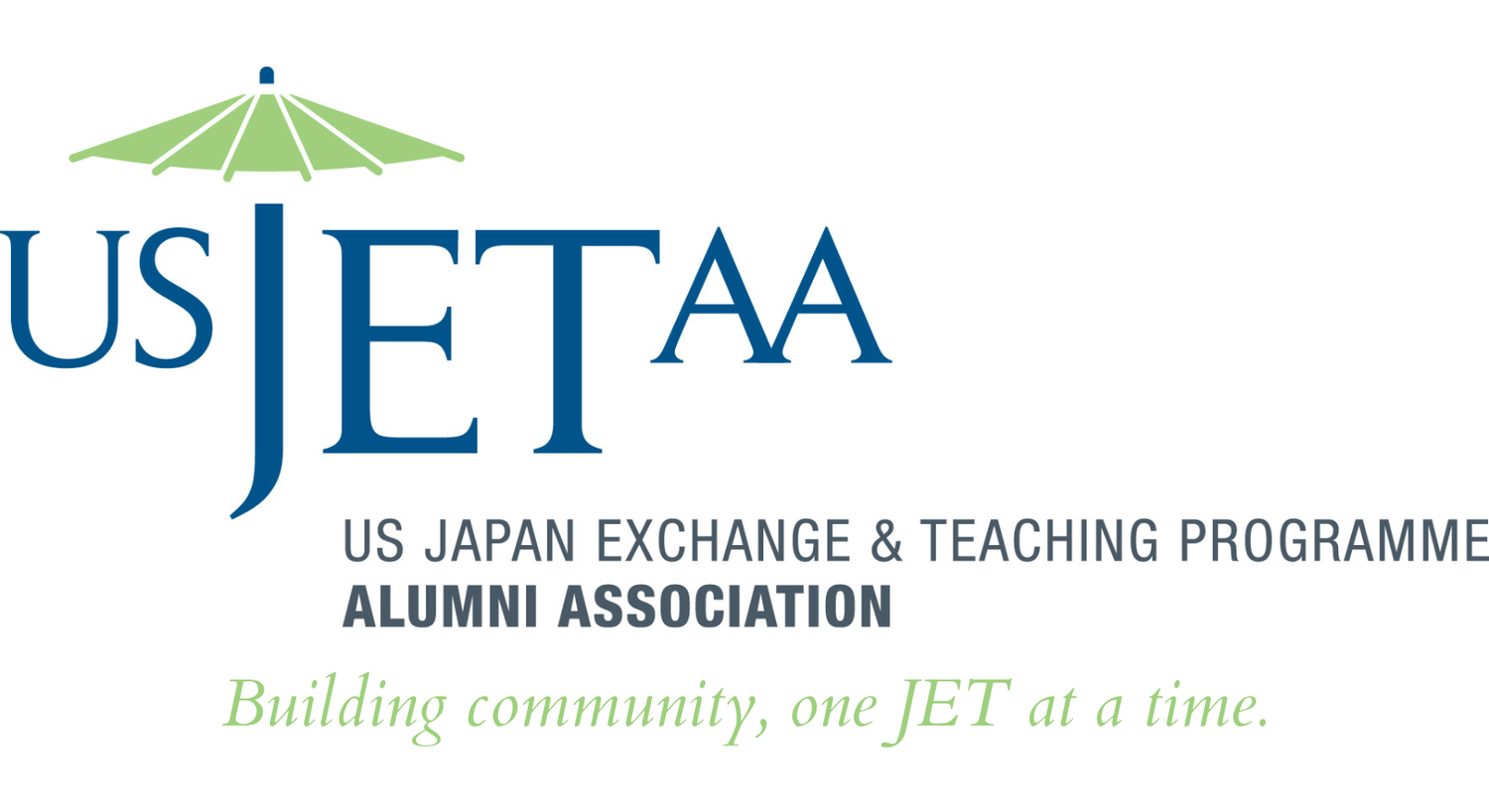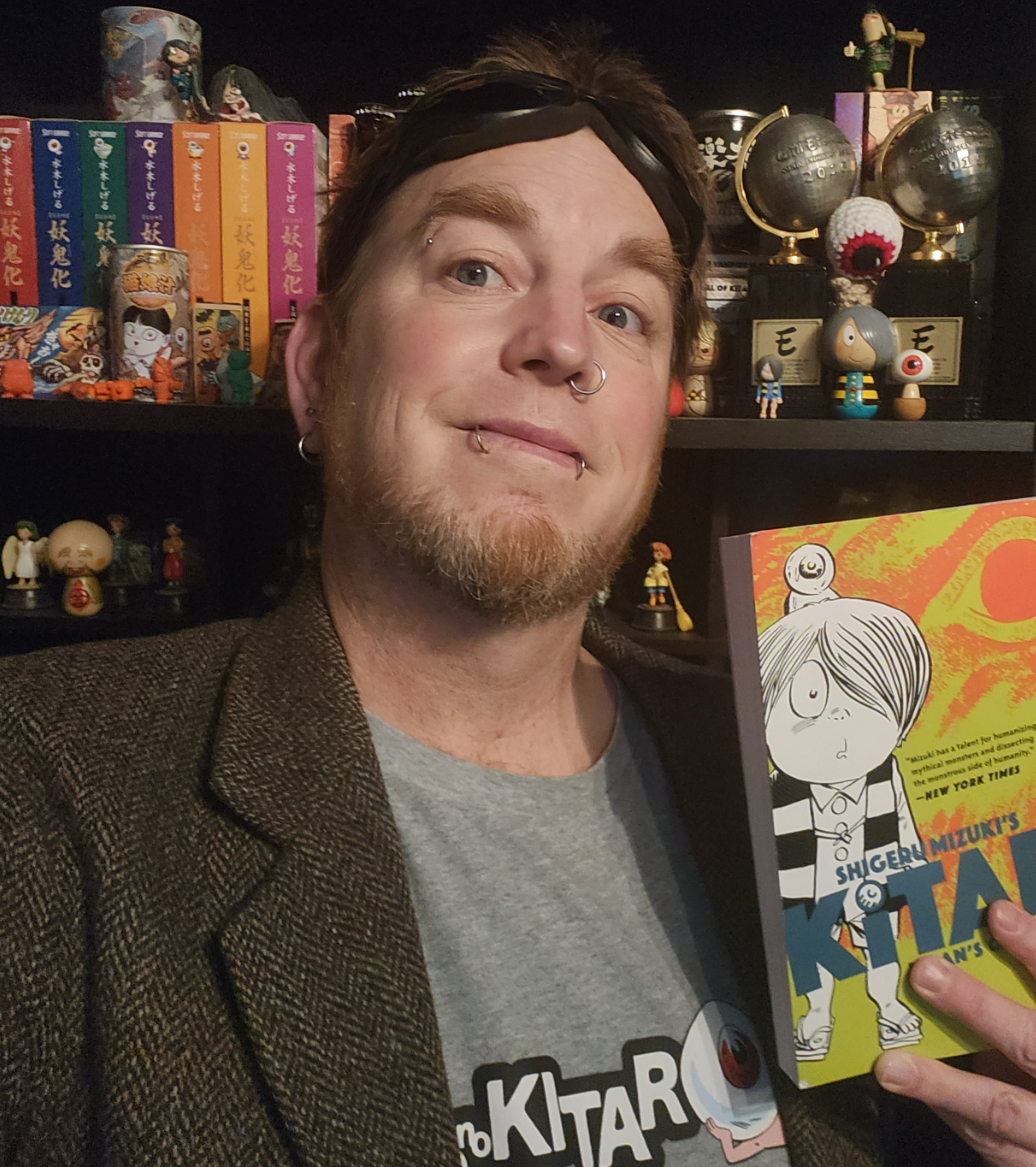Senpai Spotlight: Bringing Ghost Stories to Life
Zack Davisson (Nara/Osaka, 2001-2006)
Interviewed by Kimberly Matsuno (Niigata, 2019-2022)
Zack Davisson has always been interested in folktales and all manner of spooky things. Maybe it was due to growing up in the United States’ Pacific Northwest reading about Bigfoot, or the time he spent in Scotland, where he became obsessed with local fairy tales and the Loch Ness Monster. But it was Zack’s time in Japan as an Assistant Language Teacher on the JET Program that solidified his love of Japanese monsters (yokai) and ghosts (yurei) and set him on the path to become the prolific writer he is today.
This interview goes over Zack’s entry into his career as an author, the lessons he learned along the way, and his insights and advice for young authors looking to publish their first book.
How did you transition from an Assistant Language Teacher to a career as an author and expert in Japanese folklore?
Being on the JET Program and living and working in Japan gives you an opportunity, but what you do with that opportunity is entirely up to you. I knew I needed to cherish the time that I had in Japan and do something with it. And for me, that was getting a master’s degree.
The focus of my program was on Japanese religious studies. I wrote my thesis on Japanese ghosts, not only because that was something I was particularly fascinated about, but because it was something that was also so clearly important to Japanese society. It was that thesis project that eventually became my first book, Yurei: The Japanese Ghost.
I also started doing a lot of freelance writing during my time in Japan. I wrote for my local AJET chapter for fun, then I started doing it professionally, writing for places like Japanzine, Kansai Timeout, and local Japan-based magazines. That's when I really discovered that I enjoyed writing about this stuff and I wanted to keep sharing these stories with others.
Zack’s publication with Chin Music Press
How did you get in touch with the publishing houses you’ve worked with so you could turn these stories into physical books?
It was hard. I tried for years to get my thesis published. For the longest time it was just rejection after rejection after rejection. Actually, I can't even say “rejection,” because most of the time I would send it to a publisher and then would just get zero response back. But I eventually got a response from Gregory Starr at Kodansha. His response was also a rejection, but it came with a word of advice. He basically told me, “I like the book, but I don't know who you are. And because I don't know who you are, I can't sell you.”
He explained to me that it's hard to sell a nonfiction book by someone who is not an established expert. He advised me to start a blog or to do something to establish an identity for myself as an expert on this subject. So that's what I did. I started a website and began introducing myself as “an acclaimed expert in Japanese folklore,” and eventually I was able to get a publishing deal with Chin Music Press.
What is the publication process like?
To write a book is one thing, but to make a book is an entirely different process. You have to figure out layout and design and all these aspects of it that I never expected. For example, I wanted one of those cool sewn-in bookmarks. And my publisher was like, “Awesome. Those will cost you $10,000. Are you willing to lose $10,000 of royalties to get sewn-in bookmarks?”
. . . So sorry, my books do not have cool sewn-in bookmarks.
Needless to say, there was certainly a bit of a learning curve where I had to learn that passion and marketability have to go one along with the other. Publishing is a lot of learning how to make compromises and figuring out how to change whatever it is that you have into a marketable product.
As a writer, you have to learn to trust the expertise of the publisher you're partnering with. It’s a tough thing to do because you've spent all this effort making your book, and now you have to let go. However, at the end of the day, if your book doesn’t sell, then it doesn’t matter.
Do you have any tips or recommendations when it comes to the actual mechanics of writing a nonfiction book—from managing research to crafting a writing style or voice?
Because of my specific topic, there's a Japanese government database called the Kai Densho database, which is basically a collection of all their folklore resources. I also rely heavily on JSTOR, which is an online repository of academic articles. Without either of those two resources, I absolutely could not do what I do.
But when it comes to writing, my process is to not use anything other than Word. When I’m researching, I throw all of my thoughts into a Word doc. Then I’m left with a document that's just basically filled with fragments. So I’ll open a new doc, move some of those fragments around until they make sense, and just write and rewrite and rewrite until I feel like it's okayish.
A lot of writing style is just intuitive, but I’ve learned a lot about pacing over the years. When it comes to nonfiction, you want to give readers something that is unfamiliar, familiar, and unfamiliar again—in that order.
You want to give them something unfamiliar, because that way they realize you know something they don't, and they feel like they have something to learn from you. But then you want to provide them with something familiar, so they feel like they can understand and relate to what you are saying—because if it's just all unfamiliar, you'll lose them. Then you hit them with the unfamiliar again to keep them excited and interested in what you have to say. By repeating this unfamiliar, familiar sandwich throughout the book, you are able to keep readers turning the page from one to the other, to the last.
Do you have any words of advice for people who are looking to pursue a career as a nonfiction writer?
My favorite quote about having a career as a writer comes from the movie Rocky Balboa. “It's not about how hard you can hit. It's about how hard you can get hit and keep moving forward.”
I think it is important for young writers to understand that this career involves a lot of rejection and harsh criticism. It'll take 200 “nos” to get to that “yes.” There are people out there that are just magically lucky, but you are probably not one of them.
But the main advice I always give to young writers is to “find your swim lane.” When it comes to nonfiction, so much has already been covered, but certainly not everything. Find something that truly interests you, something that you could just dive down and enjoy researching. Then, whatever your swim lane is, own it. Become the person that anytime anyone thinks about that subject, they think about you.
Part of that might also involve building an interest for something that doesn't even have a following yet. I had to do that for yokai, and I still do it by going to anime conventions and giving panels on Japanese folklore and monsters.
Final question. What is your favorite Yokai?
My all-time favorite is probably kappa, but I also love this one called “eyeball butt” or shirime in Japanese. One of the things I love so much about shirime is that the monster is entirely just a crass joke made by the artist Yosa Busan in the Edo period. Busan’s work is all just gags. That's all they are. There's no story there. There's no explanation. He literally drew them to make people have a chuckle, and now shirime has appeared in a Ghibli film. I just love that.
About Zack Davisson (Osaka/Nara, 2001-2006)
Zack Davisson is an award-winning translator, writer, and folklorist. He became fascinated with Japanese language and culture at a young age, but never had the chance to study the language or visit Japan until he was 33, when he gave up his life as a project manager at Amazon and moved to Japan on the JET Program. He firmly believes that becoming a JET was the most impactful decision he ever made, and it changed his life 100%.
His works include Yurei: the Japanese Ghost, Yokai Stories, Narrow Road, Amabie: Past and Present, Kaibyo: The Supernatural Cats of Japan, and English translations of Shigeru Mizuki's multiple Eisner Award-winning Showa: a History of Japan, Tono Monogatari, and famous folklore comic Kitaro. He currently writes Ultimate X-Men for Marvel Comics.
He has lectured on manga, folklore, and translation at Duke University, Annapolis Naval Academy, UCLA, among others. He currently lives in Seattle, WA with his wife Miyuki, dog Mochi, cat Shere Khan, and several ghosts.
The Senpai Spotlight series is brought to you through partnership between USJETAA and AJET’s CONNECT Magazine. The series features JET alumni from the US who have made successful careers for themselves in various fields—with the goal of inspiring young JETs and JET alumni to pursue their own dreams while also offering some words of advice only a senpai could know.
If you, or someone you know, would like to be featured as a Senpai Spotlight, please reach out to us at contact@usjetaa.org.
This edition of Senpai Spotlight was written by Kimberly Matsuno who was an ALT in Niigata from 2019-2022, during which time she contributed to CONNECT Magazine as both a writer and a section editor. She is excited to continue contributing to CONNECT and to assist in fostering relations between current JETs and the JET alumni community.





